Warships. Beautiful, fast, useless
History Our heroes began almost immediately after the First World War, where Italy, frankly, did not win laurels. The Italian battleships and armadillos calmly stood up in the harbors, not trying to catch the stern adventures, because there were no victories, but there were no defeats. The Italians even “won”, that's how it happened.
Having won in this way, Italy even increased its fleet by receiving reparations.
Here we start with reparations. Having received five cruisers at once (three German and two Austro-Hungarian), and having six of their own, the Italians seriously thought that it would be nice to make the Mediterranean Sea Italian. Or “Our Sea,” as Mussolini said.
But for this it was necessary to build ships, since France, the eternal rival, did not doze off either. And the resulting rather old and motley gang of cruisers did not match the level.
However, the moment came for the conclusion of the damned Washington Treaty, and everything went a little different than the Duce would have liked.
According to the Treaty, Italy received the status of the fifth sea power, and, despite the restrictions imposed, it turned out that if the Italians sent a couple of old cruisers to the scrap, they could build as many as seven new heavy ships of this class.
Breaking does not build, the work began to boil.
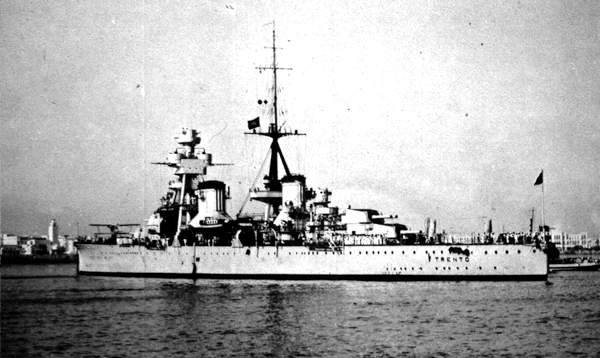
They knew how to build ships in Italy since the time of the Roman Empire, so it turned out to be simple to adapt everything that was written in the Washington Treaty to the conditions of the Mediterranean Sea.
The idea for the main Italian ship, Philippe Bonfliletti, was very interesting. Since it turned out that under the terms of the agreement something had to be sacrificed, Bonfliletti decided to bring armor to the altar of victory.
According to his plan, ships should be fast, maneuverable, with very long-range guns. Range and seaworthiness were completely not critical, since the new cruisers were supposed to operate in the conditions of the Mediterranean puddle, where Italians encountered gas stations quite often. Armor was not a priority either, although it was impossible to say that the ships came out “cardboard” either.
Of course, like all countries, Italians did not meet the allotted 10 tons of displacement, but given their fifth place in the world, no one paid special attention to this. Showdowns were a level higher, so the Italians built ships without much attention from the outside.
The first Italian heavy cruisers were the Trento and Trieste. They were followed by other ships, all the heavy cruisers of Italy received names in honor of the cities that retreated to Italy according to the results of the First World War.
After Trento and Trieste, five more ships were built, already fundamentally different from the first, although the Bolzano is often attributed to the Trento type, although this is not entirely correct. The ships were somewhat similar, but the difference was quite noticeable. However, we will talk more about this.
Italian shipbuilders made very peculiar ships. Beautiful, elegant and fast.
However, elegance and speed in general were the hallmark of Italian ships.
The Trento was first considered a very successful ship, and two heavy cruisers for the Argentinean Navy, the Almirante Brown type, were built by this type.
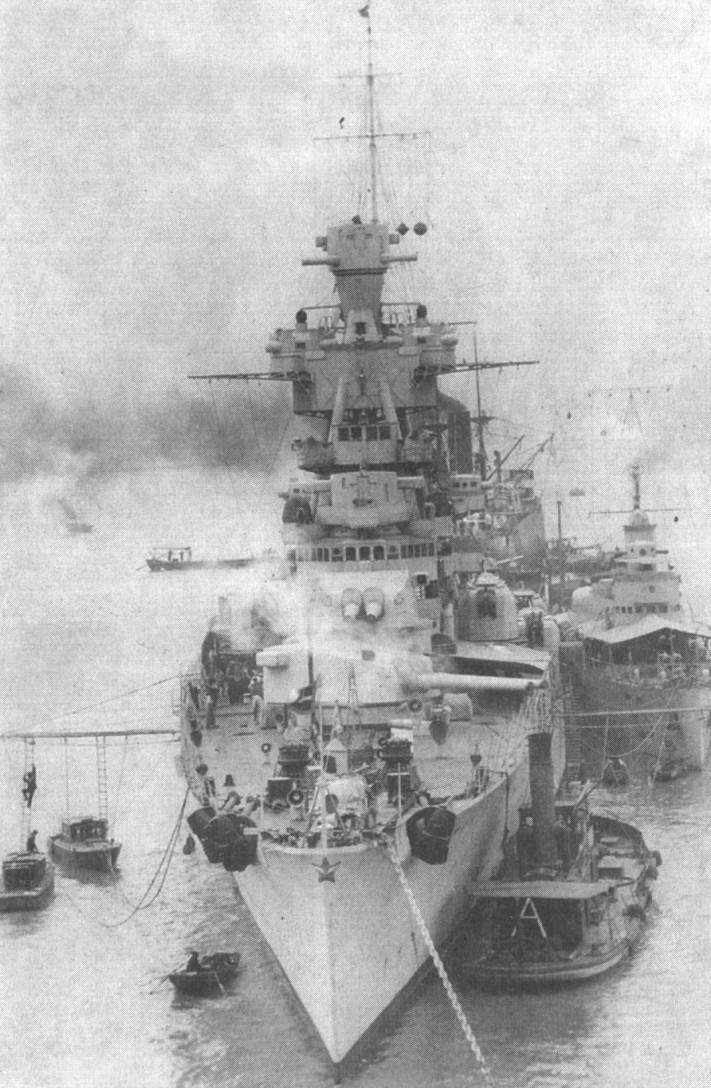
However, the devil is in the details, and we will talk about the details in the process.
What were the ships like?
Data on Trent / Trieste.
Displacement. Standard - 10 511/10 505 t, full - 13 548/13 540 t.
Length 190 / 190,96 m.
Width m 20,6.
Draft 6,8 m.
Booking:
- the main belt - 70 mm;
- deck - 20-50 mm;
- traverses - 40-60 mm,
towers - 100 mm,
barbets - 60-70 mm,
cutting - 100 mm.
Engines: 4 ТЗ Parsons, total capacity 150 000 l. from.
Speed 36 knots.
Cruising range 4 160 nautical miles (at 16 knots).
Crew 781 man.
Armament:
- 8 (4 × 2) 203 mm Ansaldo guns Mod. 1929;
- 16 (8 × 2) × 100-mm universal guns "General Relativity" Mod.1927;
- 4 (4 × 1) × 40 mm Vickers-Terni anti-aircraft guns Mod. 1915/1917;
- 8 (4 × 2) × 13,2 mm Breda anti-aircraft machine guns Mod. 1931;
- 4 × 2 mm torpedo tubes.
Aviation group: 1 catapult, 2 seaplanes.
In 1937, a stern pair of universal 100-mm gun installations was replaced by 4 twin 37-mm anti-aircraft guns manufactured by Breda.
The main caliber of cruisers of the Trento type consisted of eight 203-mm guns with a length of 50 calibres produced by the famous Ansaldo factory.
The guns were placed linearly elevated in four two-gun towers - two in the bow and two in the aft.
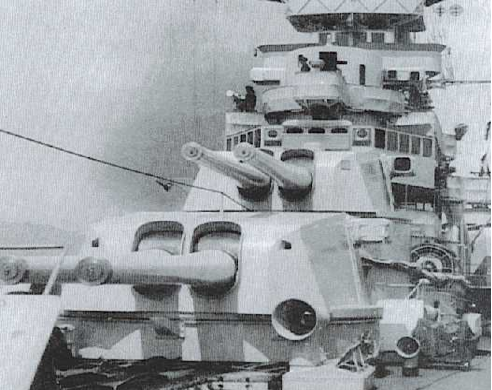
The guns were ... ambiguous. Projectile weight 125,3 kg, brand C charge weight 47 kg, initial projectile speed 905 m / s, rate of fire at an elevation angle of 15 °, one shot in 18 seconds, and at an elevation angle of 45 °, one shot in 40 seconds. Charging was carried out at a fixed elevation angle of 15 °. Maximum range 31 324 m.
In principle, everything looks pretty good, right?
The capacity of the cellars is 1300 shells and 2900 charges, the ammunition of one gun consisted of 162 shells.
During the tests, however, it turned out that the trunks wear out very quickly, therefore, a different alignment was selected experimentally. The weight of the projectile was reduced to 118,5 kg, the initial speed to 835 m / s, while the range decreased to 28 km, but the wear of the trunks was significantly reduced.
But not a drop in range became the Achilles heel of the Italian beauties. Guns 203 mm / 50 Ansaldo Mod. 1924 were devilishly slanting. Accuracy ... but you can’t talk about accuracy here, it was not at all. These guns were armed 7 (SEVEN) Italian heavy cruisers fleetwho took part in the Second World War. Seven cruisers with 56 barrels achieved THREE recorded hits during the war.
This, you see, if not a shame, then his dress rehearsal.
What was the reason for this inaccuracy is hard to say today. Mostly they blame the close arrangement of the guns in the towers, yes, both barrels were there in the same cradle, but the French had the same system, and while they fought, they somehow managed to get in. Perhaps the reason lay in lightened shells, but in fact the powerful guns in terms of characteristics did not allow the cruisers to at least somehow manifest themselves on the battlefield.
The universal cruiser caliber consisted of sixteen 100-mm cannons of the 1924 model, developed on the basis of the Skoda guns of the 1920 model in eight towers. Let's put it this way: not bad tools, but they did not carry freshness from them. By the beginning of the war, they are definitely outdated both in terms of guidance and in terms of rate of fire. Therefore, on many ships they were happy to replace them with quick-firing machines.
Anti-aircraft weapons included four 40-mm Vickers "Pom-pom" and eight 13,2-mm machine guns. In addition, on the main deck between the tubes were four double-tube 533 mm torpedo tubes.
The ship was equipped with three aircraft, two of which were located in the hangar in front of tower A, and a Gagnotto catapult to launch them. As aircraft, the Piaggio P.6t, Macchi M.41, CANT 25AR, and IMAM Ro.43 models were used in series.
In general, if you look formally and in numbers, the Trento cruisers had very good armaments for those years, in fact the armament was very much below average.
The Trento was laid down on February 8, 1925, launched on October 4, 1927, and entered service on April 3, 1929.
The Trieste was laid down on June 22, 1925, launched on October 24, 1926, and entered into service on December 21, 1928.

Military service before the Second World War on ships was frankly not dusty. Parades, visits, trips in the Mediterranean. True, Trento had a trip to the Far East, with calls to Shanghai and Japan, which once again confirms that the cruiser’s seaworthiness was at a good level.
In 1936-1939, Trento occasionally acted off the coast of Spain, supporting the Franco during the civil war. But somehow he did not gain military success, perhaps because there was no one to fight with.
By the time Italy entered World War II on June 10, 1940, Trento, together with Trieste and Bolzano, made up the 3rd division of the cruisers of the Second Squadron. The division was given a division of four destroyers, and in this form the compound went to war with France.
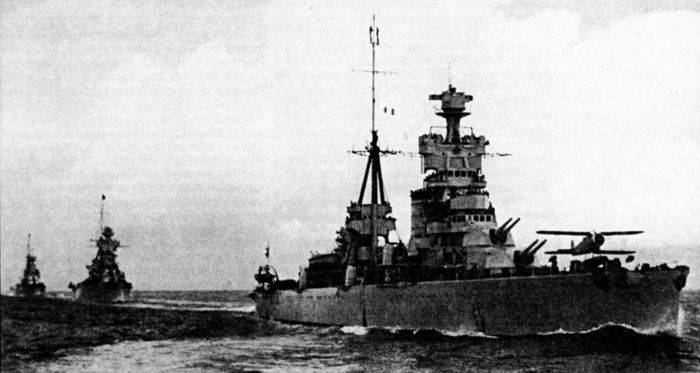
But it all ended very quickly, the cruisers managed to make one short combat campaign on June 22-23, 1940, in which they had no contact with the enemy.
July 9, 1940 "Trento" among other ships of the Italian fleet took part in the battle of Calabria.
During the battle, Trento successfully evaded the British torpedo bombers' Swordfish attack, and then, together with other heavy cruisers, entered the battle with light British cruisers, opening fire from a distance of about 11 miles.
The Italians failed to get into British ships, and then the Urspight came to the aid of the British cruisers and dispersed the Italians. Then again the British torpedo bombers flew in and again the cruisers calmly fought back and left.
In general, Italians acted very passively, did not achieve a single hit, although the British light cruisers hit the Bolzano cruiser three times.
Further, Italy decided to fight against Greece, in connection with which the cruisers at the end of October 1940 were relocated to Taranto. There they were found by the British, who arranged on November 11 in the harbor of Taranto the forerunner of Pearl Harbor.
Trento was hit by a 250-pound (113,5 kg) semi-armor-piercing bomb. The bomb hit the nasal 100 mm port of the port, pierced the deck and got stuck in the structures below, but did not explode. This is called "lucky in full." It could be much worse.
And on November 26, 1940, the main forces of the Italian fleet (2 battleships, 6 heavy cruisers, 14 destroyers) again went to sea to strike at the British compound. Naturally, the 3rd division of heavy cruisers also went into battle. But the fight, if it turned out, is very crumpled.
The fact is that aerial reconnaissance of the Italian fleet spotted a British squadron consisting of 1 aircraft carrier, 1 battleship, 1 battle cruiser, 1 heavy cruiser, 6 light cruisers and 14 destroyers.
The commander of the Italian squadron, Admiral I. Campioni, decided that an easy victory would not work (which is actually debatable) and ordered him to withdraw.
So the only clash came just from the cruisers of the 3rd division, who were closest to the enemy and were forced to join the battle. Against three Italian heavy cruisers were 1 heavy and 4 light cruisers of the British.
The Italians opened fire from a distance of about 10 miles and soon got into the heavy cruiser "Berwick", on which the stern towers failed. But then the light cruisers were approached by the battle cruiser Rinaun, and although its volleys did not cause damage, the Italians developed full speed and broke the contact.
The last battle, "Trento" held June 15, 1942, as part of a compound that went to sea to intercept the British convoy in Malta.
In the early morning of June 15, 1942, Italian ships underwent a series of attacks by British aircraft. At 05:15, Trento got hit by a torpedo from the British torpedo bomber Beaufort. The hit came in the area of the bow boiler compartment, which was flooded. Water flooded the other compartments of the ship, a fire started, the cruiser lost speed.
The compound went on to pursue the convoy, and the Trento crew began the struggle for survivability. It started to turn out, the fire was extinguished, the fodder boiler plant was launched, they started pumping out water and using the destroyer Pigafetta to tow the ship to the base.
But then rock intervened in the form of the British submarine Ambra, which from a fairly large distance (about 2 miles) fired two torpedoes at the cruiser. One torpedo hit the cruiser in the area of the bow elevated tower. After the explosion, there was a detonation of the bow artillery cellars after five minutes, the cruiser sank.
In this short time, Italians managed to save 602 people, including 22 officers. 549 people were killed, including 29 officers. Among the dead was the commander of Trento 1st-Class Captain Stanislao Esposito.
Trieste lived a little longer. On April 10, 1943, Italian ships in the harbor of the new base of La Madallene were attacked by a compound of 84 American B-17 heavy bombers.
During the raid, the Trieste was butchered very thoroughly, the cruiser received 4 hits with 1000-pound (454 kg) air bombs. Add-ons were destroyed, one bomb lay down on the starboard side, a leak opened, a fire started from other hits.
The two-hour struggle to save the ship was unsuccessful and, as a result, the Trieste capsized and sank at a depth of 20 m. Crew losses - 30 killed, 50 wounded.
What conclusion can be drawn?
Not everything that is beautiful on paper is good on the waves. This can be attributed to the Trento cruisers in full.
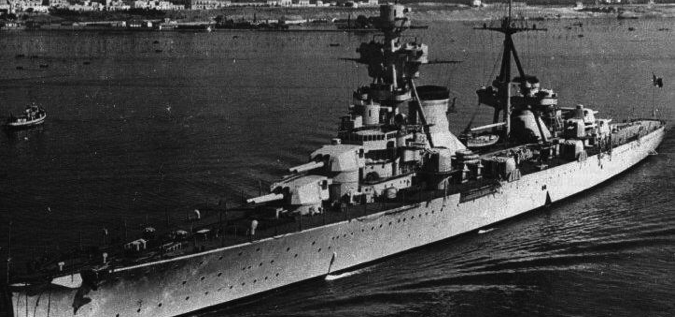
Like any Washington cruiser, Trento and Trieste turned out to be not very successful ships. Especially in comparison with later classmates, because at the end of the 20s of the last century it was very difficult to accommodate sane armor, a decent power plant, and weapons from 10-000 8-mm guns in a contract.
Against the background of cruisers of potential opponents, the Trento type looked good. He had a full, albeit thin armor belt within the citadel, a good reservation of the deck and towers. Compared to the eternal French rivals, Italian ships generally looked powerful and solid.
The Italians did not need a special seaworthiness, as already mentioned, because the water area of the Mediterranean Sea is not the Atlantic and especially not the Pacific Ocean. As the special autonomy and range of action was not needed, both its bases and the likely adversary were all at hand.
But the project also had flaws, not noticeable on paper, but very serious at sea.
The first such drawback was ... speed! Yes, 35 knots on paper is a lot. For a heavy cruiser - a lot. But measurements carried out under ideal conditions, alas, were similar to exaggerated records.
In fact, cruisers of the Trento type in a real combat situation could go for a long time at a speed of no more than 30-31 knots, which is pretty much less than intended. But in fact, the "slow-moving" cruisers of Great Britain and France moved with the same speed.
The second nuance. Housings. The eternal problem of many Italian projects (yes, we immediately recall the Soviet "sevens") were frankly weak corps. Perhaps if the Trieste’s hull weren’t so weak, the ship would have withstood a nearby bomb explosion. But the vibrations that followed the hulls of the Italian cruisers contributed, weakening the already not very strong hulls.
The third is artillery. The main caliber was completely incapacitated. On paper, the 203-mm guns were world-class, in fact - three hits on 56 barrels that fired a fair amount of shells is a fiasco.
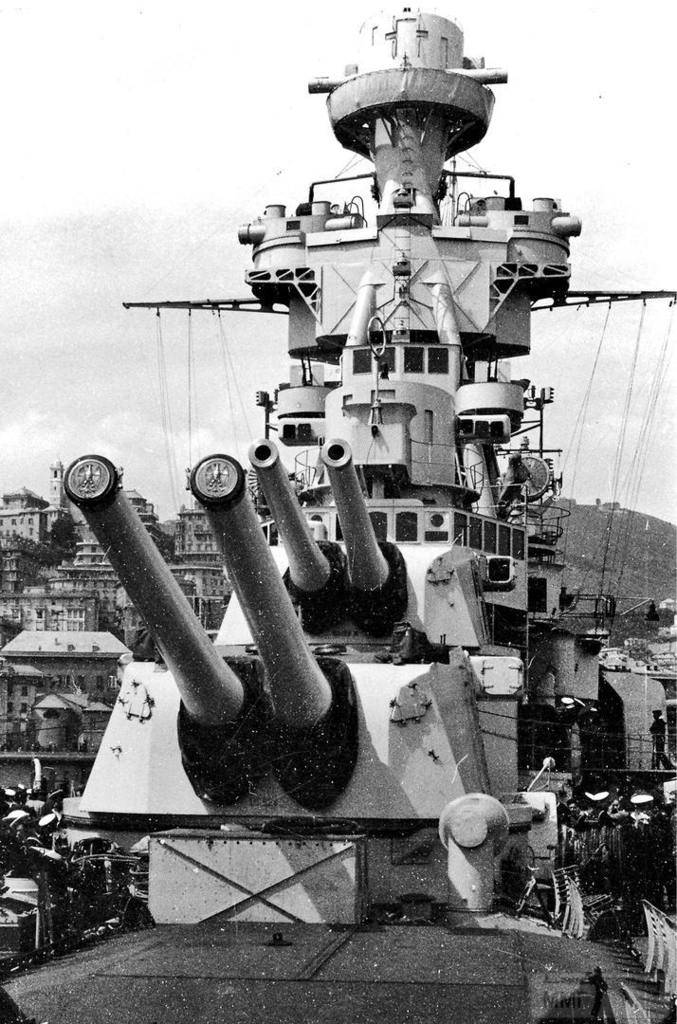
You can blame the cruiser for insufficient speed, small autonomy and range, weak seaworthiness, but even these minuses are not able to outweigh the fact that the ship is not able to conduct accurate shooting with its main caliber. For all the same, the main purpose of the heavy cruiser is to inflict damage on enemy ships below class. If he is not able to do this - then what kind of warship is it?
So in the end, Italian cruisers of the Trento type were completely useless in the most important thing - in the ability to inflict damage on the enemy. Unable to fight, they went to the bottom, beautiful, elegant, but not at all dangerous for enemy ships.
Beauty is not always really deadly ...
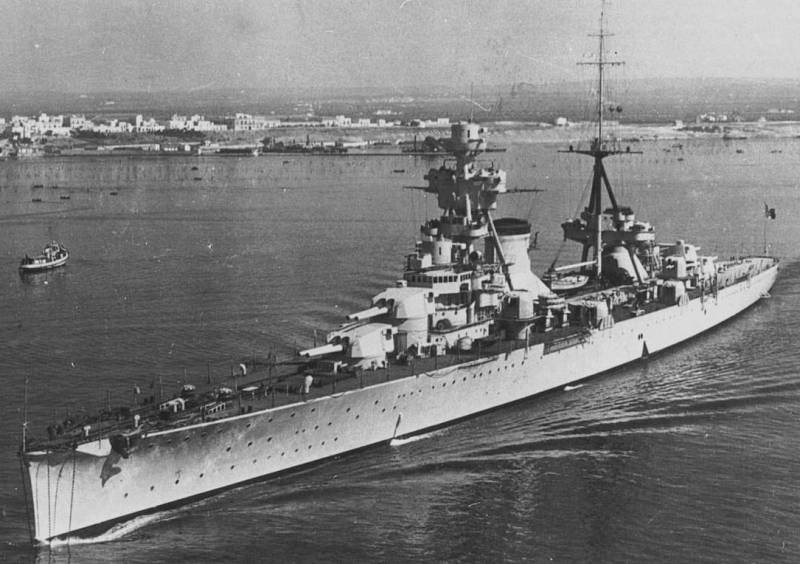
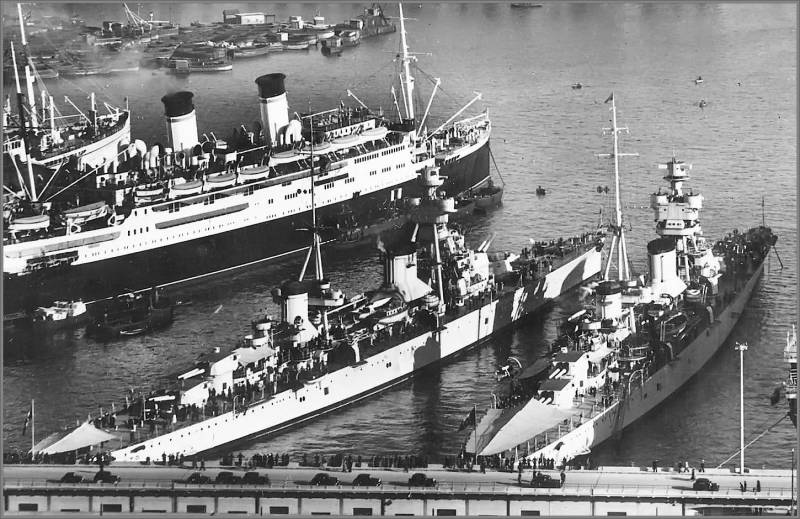
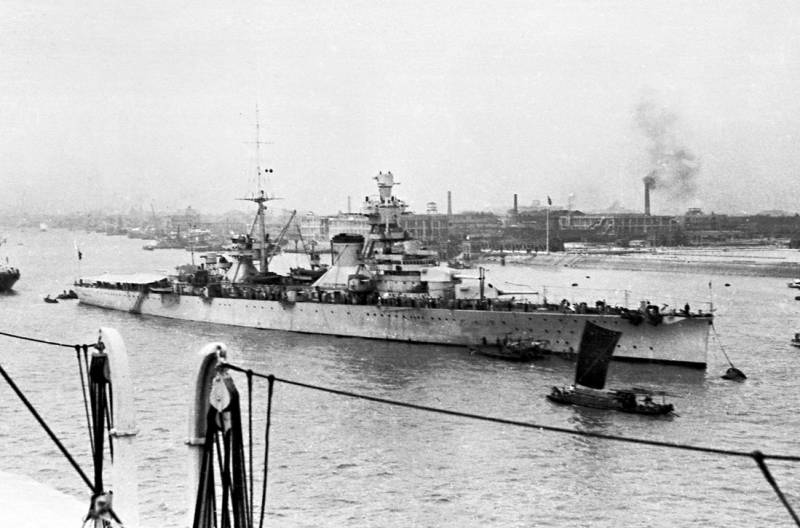

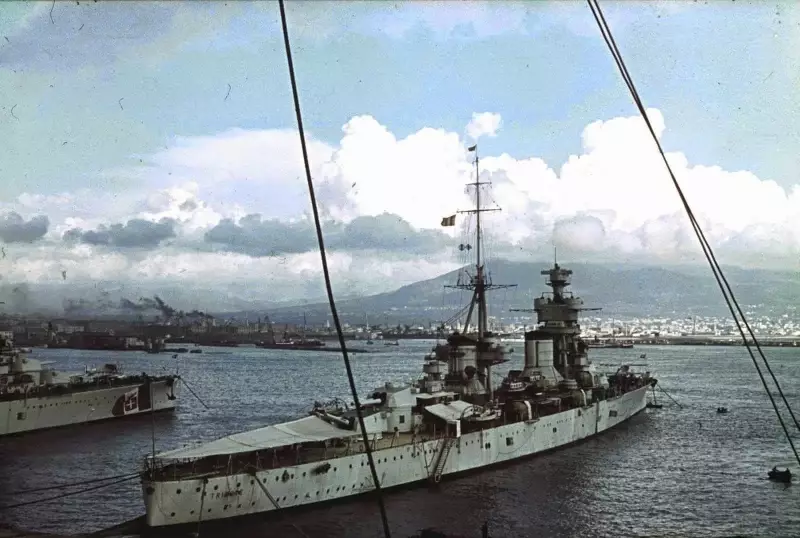
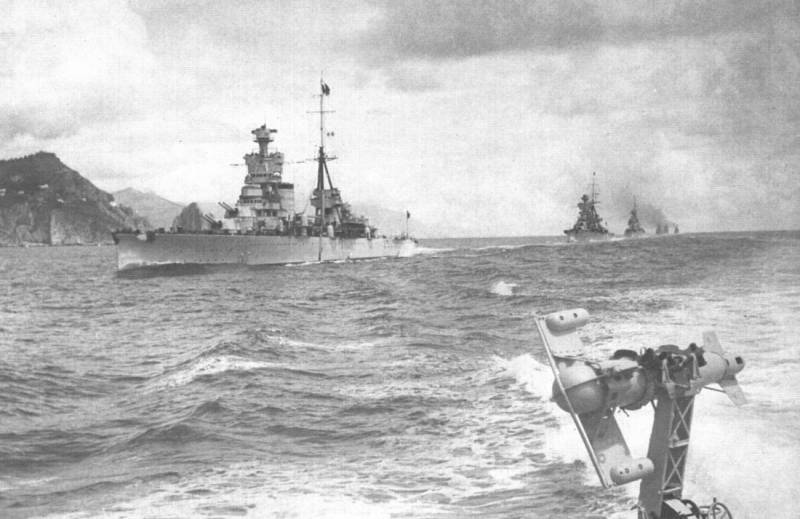
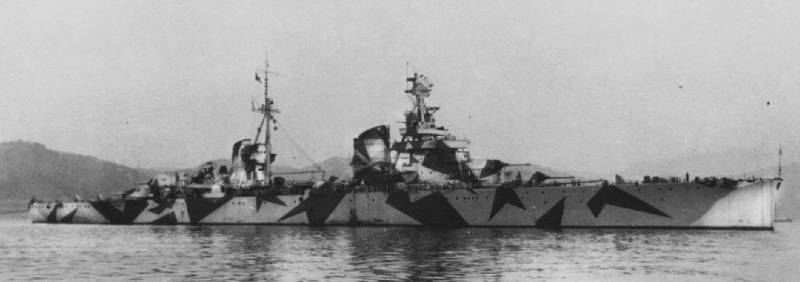
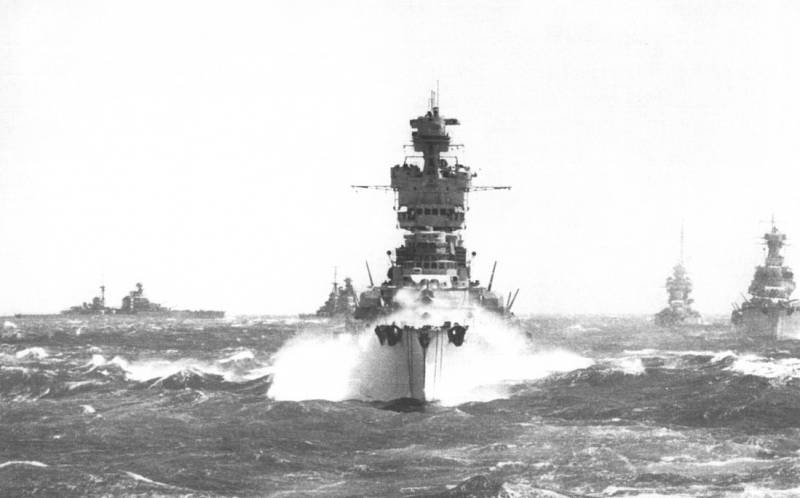
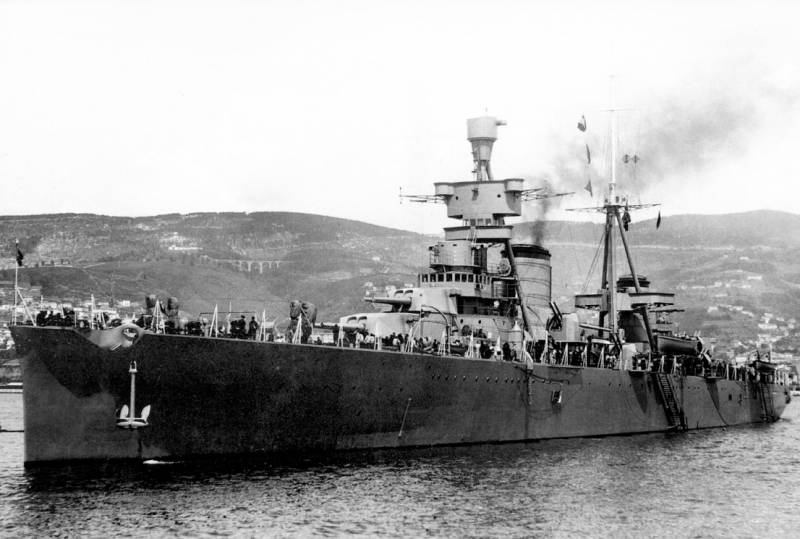
Information